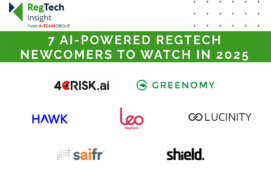DataFlux’s release of version 2.2 of its DataFlux Data Management Platform introduces its so-called Business Data Network, a framework that allows data managers to set semantic terms across business areas. By adopting a common set of terms for securities, counterparties and activities, BDN can help institutions take a significant step toward a robust approach to data governance.
The issue of data governance was a recurring theme at A-Team’s Data Management for Risk, Analytics & Valuations conference in London in October. It’s widely agreed that by implementing a coherent governance policy, data managers can start to gain control over their disparate data sets across the enterprise. A-Team recently teamed with Accenture to publish a white paper on the issue, available free of charge from here.
DataFlux Data Management Platform’s BDN allows business and data governance teams to define and manage terms once only, for use throughout the enterprise, ensuring that all stakeholders are singing from the same songsheet. BDN provides a framework that incorporates role-based access, lineage, security and history to maintain control and visibility for the management of a business glossary.
This approach is important, says Mazhar Leghari, senior director of market strategy at DataFlux, a subsidiary of SAS, because many financial institutions are facing the challenge of multiple data repositories often resulting from mergers and acquisitions. This means that different areas of the business are using different terms in the data they use to describe clients, client risk profiles, counterparties and the like.
Leghari says the new platform can be implemented by firms with legacy semantic situations. “Operational continuity is one of the biggest challenges facing banks,” he says. The DataFlux semantic layer “interjects” into banks’ existing data hierarchies, Leghari says, and ensures consistency of approach across the enterprise. “We can be a placeholder for hierarchy management,” he says.
The DataFlux Data Management Platform is a single platform for data management and integration that aims to help firms ensure data quality across the enterprise. It features enhanced master data management (MDM) capabilities, and a set of web-based offerings that help business users, data stewards, project managers and IT teams collaborate more effectively to manage business and reference data.
Web-based dashboards and monitoring tools allow data governance and data stewardship teams to create more refined controls on data – and provide a way to communicate the health of corporate data – by creating standards that help ensure that data is accurate, reliable and fit for purpose. The idea is for financial institutions to establish and enforce uniform standards for enterprise data – a critical component for data governance.
Among the new features in Version 2.2 are enhancements to the platform’s Reference Data Manager module that allow business users to create and manage hierarchies, with definitions, entities and relationships clearly defined.
A new Master Data Management Foundations feature extends the DataFlux Data Management Studio interface by providing an integrated, intuitive approach for building MDM hubs. Without acquiring and integrating additional technologies, users can begin a phased approach to MDM for entities such as client, counterpart, security or security type.
New Dashboard and Monitor Viewers allow users to access configurable at-a-glance summaries, trend views and KPIs on data quality and data management processes within the organization.
Finally, the new version expands unstructured data access, allowing management of the rising tide of unstructured information held within text-, voice or web-based environments. The latest release of the Data Management Platform extends its unstructured data access and contextual extraction features to quickly capture this information and incorporate it into existing data management processes.
Subscribe to our newsletter




